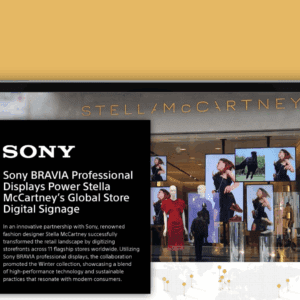Normal
0
false
false
false
EN-US
X-NONE
X-NONE
/* Style Definitions */
table.MsoNormalTable
{mso-style-name:”Table Normal”;
mso-tstyle-rowband-size:0;
mso-tstyle-colband-size:0;
mso-style-noshow:yes;
mso-style-priority:99;
mso-style-qformat:yes;
mso-style-parent:””;
mso-padding-alt:0in 5.4pt 0in 5.4pt;
mso-para-margin:0in;
mso-para-margin-bottom:.0001pt;
mso-pagination:widow-orphan;
font-size:10.0pt;
font-family:”Calibri”,”sans-serif”;}
By Heather Hall, Principal Retail Consultant, Acxiom Corporation

We all have that one store that gets its hooks in us and won’t let go. I’m buying from mine (in store or online) at least once a month — on sale, full price, things for me, things for my son — you could say I’m just a little engaged.
Two years ago, my husband further enabled my engagement. He bought me a gift card. I was happy.
This year, he didn’t make it an annual ritual.
Instinct is to be disappointed, right? If someone knows you well enough to pick the right gift one year, why not repeat it? No, I’m not talking about my husband (although he should know), I’m talking about the retailer. It turns out, they have a decent general marketing model, but they aren’t maximizing all of their data. They act as if they know me, and market to me in a broad sense. But what about people who aren’t top-tier consumers?
This is, as I see it, the biggest problem with Pareto Principle customer marketing: As individuals, I’m a best customer, the 20% driving 80% of revenue, whereas my husband is not. One transaction, while sizable, is not enough to vault him into that top tier, and so he quickly sank to the bottom of the communication pool.
Let’s focus on the opportunity to maximize the spend velocity of this mysterious group of “one and doner’s” (who, by the way, represent somewhere between 40% to 65% of your current customer base). Here are four quick tips on how to find these consumers, woo them, and win them:
- Use analytics to determine the actual value of customers and their households, and use that information to drive engagement frequency. Develop engagement strategies using past and future value, focusing on the pockets of opportunity.
- Find the pattern in your “one and done” folks using insights from the above point — could they be more? Are they gift givers only? Develop communication streams and deploy them based on the periods of greatest opportunity (such as Christmas, Mother’s Day, etc.).
- Know who needs a discount and create incentives specifically for them. I’ve proven that I don’t need that basket offer to shop — instead, provide something special that sets me apart that doesn’t necessarily impact margin.
- Create a calendar that overlays the strategies outlined in points one , two and three onto your traditional marketing calendar. You’ll quickly see areas that focus on the top versus other opportunity areas, and in turn, can create targeted tactics supporting each.
I’m hoping the retailer I cited at the beginning of this article latches on to the points outlined. If they follow the advice above, they’ll easily be able to identify that the one month my husband shops happens to be the month that I don’t. If they talk to him, maybe send an incentive or a recommendation, I bet they’ll get him to spend more than he did last time. This translates into further engagement from me, and links the cycle at a household level, increasing the total opportunity.
Here’s hoping they don’t miss another opportunity to make me a happy(ier) customer.
Heather Hall is a Principal within the Acxiom Integrated Marketing Strategy Group. In her position, Hall helps companies develop data-led insights and customer strategies that drive top-line growth while optimizing existing spend. She has a deep background in marketing, merchandising, and store operations for retail, as well as a solid working knowledge of loyalty, customer experience and multichannel sales.






